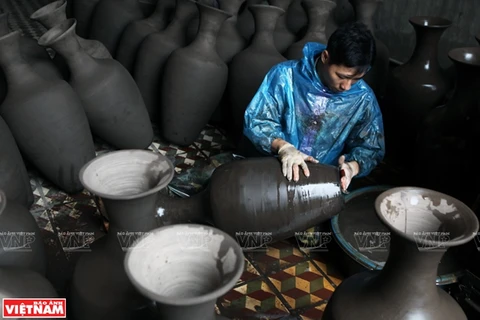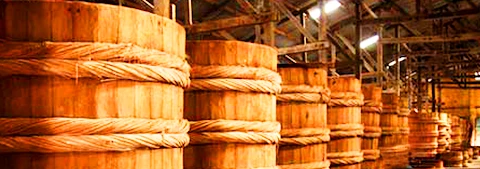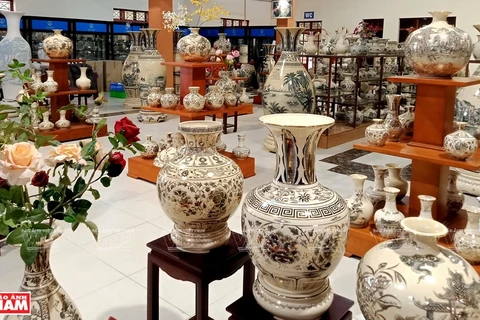Hanoi (VNA) – When it comes to blacksmithing villages, Da Sy, located on the banks of the Nhue River in Hanoi’s outlying Ha Dong district, is among the first to come to one’s mind.
Strolling along the lane that runs through the village, visitors can hear the sound of grinders and hammers, both machine and hand-held, from dawn till dusk. Products of this village are found in the home of not only Vietnamese but also foreigners.
Traditional blacksmithing village of capital city
Talking about the origin of the local craft, Vice Chairman of the Da Sy blacksmith association Dinh Cong Doan said the village came into being near the end of the 17th century. At that time, locals made spears and other weapons for warriors, and when peace was restored, they produced farm tools like rakes, hoes, and ploughs.
Da Sy has become famous nationwide for its high-quality knives and scissors, which used to be exported to neighbouring countries.
Villagers create a wide range of products, from small knives for handling offal to chopping knives and tailor’s scissors.
Products of this village are diverse and famous for their high level of durability, sharpness, and hardness thanks to good tempering techniques. Locals are proud of their capability of making knives that “can cut even steel”.
Making knives and scissors in Da Sy is a quite sophisticated process. After fine steel is selected, it is heated in a forge to a certain temperature using coal residue. The material is then kept in firewood ash to cool down slowly as it would become brittle if it gets cool too quickly. Later, blacksmiths clean off the dross and grind its blade.
Upholding traditional craft while applying new technologies
Over centuries, forges in Da Sy have never ceased burning.
There are 1,300 blacksmithing households in Da Sy at present. Their products reach far and wide, from the north to the south of the country. Though the craft doesn’t generate high income, it ensures a stable livelihood for local residents.
Nguyen Van Moc, a renowned artisan in the village, said his workshop mainly produces knives with hilts made from recycled plastics. He noted that recycling helps both save materials and protect the environment.
 A blacksmith in Da Sy grinds the blade to polish and remove the dross from a knife (Photo: VietnamPlus)
A blacksmith in Da Sy grinds the blade to polish and remove the dross from a knife (Photo: VietnamPlus) Dinh Cong Doan and his family have been running their business for almost 50 years.
Even amid the COVID-19 outbreak, local workshops still receive large orders, though they have to reduce their workhands.
However, what Doan and the Da Sy blacksmith association are concerned with is how to save labour and protect the environment to prevent the business’s impact on locals’ health.
Artisans in Da Sy always remind their descendants and apprentices to develop a strong work ethic and to produce quality items to sustain their craft.
Da Sy blacksmithing village has been recognised as one of the outstanding craft villages in the country by the Vietnam Association of Craft Villages. The Hanoi administration has also made the planning of its production and business activities in order to preserve and bring into play the traditional craft.
A site covering 13.2ha has been zoned in Da Sy to accommodate production activities, thereby helping to minimise environmental pollution in residential areas and facilitate villagers in applying scientific and technological advances to their work./.


























